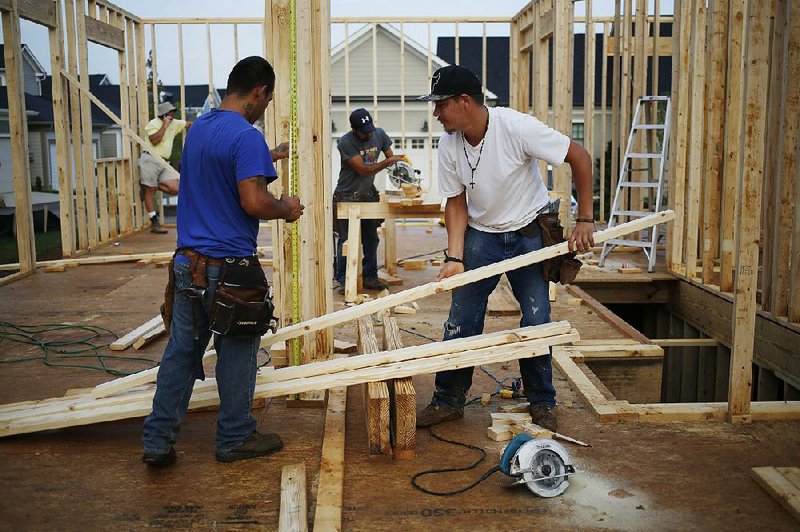WASHINGTON -- American factories expanded for a fifth-straight month in July, another sign that U.S. manufacturers are recovering from damage caused by a strong dollar. But a measure of factory employment fell.
Another economic report released Monday showed a drop in U.S. construction spending in June.
The Institute for Supply Management said that its manufacturing index last month read 52.6. That's down from 53.2 in June, but anything higher than 50 signals growth.
Production grew faster. New orders grew at a slightly slower pace.
"Over the near term, I think it's just going to be plodding along, slow growth" in manufacturing, said Josh Shapiro, chief U.S. economist at Maria Fiorini Ramirez Inc. in New York. "It's not like we've been getting wonderful economic news from around the world."
The institute, a trade group of purchasing managers, said employment contracted in July after having risen modestly in June. It has now dropped in seven of the past eight months. A separate report by the Labor Department shows that U.S. factories have shed 29,000 jobs over the past year.
"Things are solid now but not robust," said Brad Holcomb, chairman of the group's manufacturing survey committee. "You just don't want to add permanent employees until you have to and until you see that things are even stronger."
Still, factory activity overall has recovered after being pounded by economic weakness overseas and a strong dollar, which made U.S. goods costlier in foreign markets. The index stayed below 50 from October through February before turning positive in March.
"Overall, this suggests that the manufacturing sector is continuing to gradually recover," Andrew Hunter, U.S. economist at Capital Economics, wrote in a research note. But he said continuing global economic weakness means that "a strong recovery in manufacturing activity remains unlikely in the near term."
Britain's June 23 vote to leave the European Union has created uncertainty for American manufacturers. A separate ISM survey last month found that 38 percent of manufacturers expect the exit vote to hurt their business. The decision raises doubts about the future of trade between Britain and the EU.
U.S. construction spending fell for a third-straight month in June with spending on nonresidential construction dropping by the largest amount in six months.
Construction spending fell 0.6 percent after declines of 0.1 percent in May and 2.9 percent in April, the Commerce Department reported Monday.
Nonresidential construction declined 1.3 percent, the biggest setback since December, while residential activity was unchanged in June. Spending on federal, state and local government projects fell 0.6 percent, the fourth-straight decline.
Construction weakened in the April-June period after posting solid gains in the winter. Some analysts believe warmer-than-normal winter weather caused builders to move up the start of some projects, causing the second quarter to look weaker. Analysts expect construction will rebound in coming months.
The Commerce Department reported last week that orders to U.S. factories for long-lasting manufactured goods fell in June by the largest amount in nearly two years. But the details were a bit better. The figure was dragged down by a big drop in the volatile commercial aircraft category. And a category viewed as a proxy for business investment plans rose in June after two months of declines.
The government reported Friday that the U.S. economy expanded at a disappointing 1.2 percent annual rate in the second quarter after growing just 0.8 percent in the first three months of the year. Business investment fell for the third-straight quarter from April through June.
Information for this article was contributed by Paul Wiseman and Martin Crutsinger of The Associated Press and by Michelle Jamrisko of Bloomberg News.
Business on 08/02/2016
